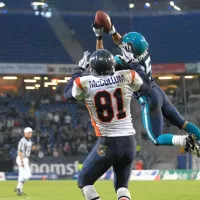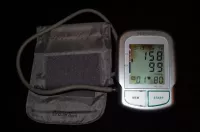Namibia, officially the Republic of Namibia, is located on the west coast of Southern Africa. It is bordered by the Atlantic Ocean to the west, Angola and Zambia to the north, Botswana to the east, and South Africa to the south. Its capital and largest city is Windhoek. Near Kazungula, Zambia, it almost forms a quadripoint with Zimbabwe along the Zambezi River.
1904: Herero and Nama genocide
From 1904, the Herero and the Nama took up arms against ruthless German settlers, leading to the OvaHerero and Nama genocide.
1904: Punitive campaign against the Herero and Nama
In 1904, German troops initiated a punitive campaign against the Herero and Nama people in German South West Africa, escalating into the first genocide of the 20th century.
1907: Herero and Nama genocide
By 1907, The German settlers continue to conduct the OvaHerero and Nama genocide, systematically killing 10,000 Nama (half the population) and approximately 65,000 Herero (about 80% of the population).
1907: First Police Zone
In 1907, the veterinary cordon fence known as the Red Line defined the boundaries for the first Police Zone.
1908: Punitive campaign against the Herero and Nama
By 1908, the German troops' punitive campaign that began in 1904 against the Herero and Nama people in German South West Africa continued, marking the culmination of the first genocide of the 20th century.
1910: Walvis Bay integrated into South Africa
In 1910, Walvis Bay and the offshore Penguin Islands became an integral part of the new Union of South Africa.
1920: League of Nations Mandate
In 1920, following World War I, the League of Nations mandated the administration of the colony of South West Africa to South Africa.
1945: League of Nations superseded
In 1945, the League of Nations was formally superseded by the United Nations (UN) as a result of the Conference on International Organization.
1948: Apartheid applied to South West Africa
From 1948, after the National Party was elected to power, South Africa applied apartheid to South West Africa.
1948: Apartheid foreshadowed
In 1948, the system of dispossession, deportation, forced labor, racial segregation, and discrimination foreshadowed the apartheid established by South Africa.
1949: Native territories become homelands
After 1949, under South African rule, native territories were turned into "homelands" (Bantustans).
1949: South Africa solidifying control
In 1949, the UN General Assembly rejected South Africa's proposal to annex South West Africa, and South Africa dismissed its opinion and began solidifying control of the territory.
1960: Population in South West Africa
The 1960 census reported 526,004 persons in what was then South West Africa, including 73,464 whites (14%).
1966: ICJ discussions on South African rule
Between 1949 and 1966, the International Court of Justice (ICJ) held a number of discussions on the legality of South African rule.
1966: SWAPO launches armed insurgency
In 1966, following the ICJ's controversial ruling, SWAPO launched an armed insurgency that escalated into part of a wider regional conflict known as the South African Border War.
1966: UN assumes direct responsibility
In 1966, the United Nations assumed direct responsibility over the territory of Namibia.
June 1968: South West Africa renamed Namibia
On June 12, 1968, the UN General Assembly adopted a resolution proclaiming that South West Africa be renamed Namibia.
August 1969: UN declares South Africa's occupation illegal
In August 1969, United Nations Security Council Resolution 269 declared South Africa's continued occupation of Namibia illegal.
1969: Radio was introduced
In 1969, radio was introduced in Namibia.
1971: General strike
In 1971, Namibian contract workers led a general strike against the contract system and in support of independence.
1973: UN recognizes SWAPO
In 1973, the UN officially recognized the South West Africa People's Organisation (SWAPO) as the representative of the Namibian people.
1975: SWAPO aligns with socialist bloc
By 1975, SWAPO's leadership, dependent on Soviet, Angolan, and Cuban military aid, positioned the movement firmly within the socialist bloc.
1978: Diamond Market
According to "The Diamond Investigation", in 1978, De Beers, the largest diamond company, bought most of the Namibian diamonds.
1981: TV was introduced
In 1981, TV was introduced in Namibia.
August 1988: Tripartite Accord
In August 1988, South Africa, Angola, and Cuba acceded to the Tripartite Accord, under pressure from both the Soviet Union and the United States, leading to an informal ceasefire between PLAN and South Africa.
March 1989: PLAN incursion
In March 1989, the ceasefire was broken after PLAN made a final incursion into the territory.
February 1990: Adoption of Namibian Constitution
In February 1990, the Namibian Constitution was adopted, incorporating protection for human rights and compensation for state expropriations of private property.
March 1990: Independence Day
On 21 March 1990, Namibia officially became independent, and Sam Nujoma was sworn in as the first President.
March 1990: Namibia gains independence
On March 21, 1990, Namibia achieved independence from South Africa, following the South African Border War.
April 1990: Namibia became member of UN and Commonwealth of Nations
In April 1990, Namibia became the 160th member of the UN and the 50th member of the Commonwealth of Nations on its independence.
1990: Independence
Before Namibia became independent in 1990, its territory was known first as German South-West Africa (Deutsch-Südwestafrika), and then as South West Africa.
1990: Sanitation Statistics
In Namibia's rural areas, 8% of the population had more than basic sanitation in 1990.
1990: SWAPO party has been dominant since independence
Since independence in 1990, the SWAPO party has been dominant in Namibia's government.
1990: Independence and Water Access
The UN evaluated in 2011 that Namibia has improved its water access network significantly since independence in 1990.
1990: South West Africa remains a possession of South Africa
Until 1990, South West Africa remained a possession of South Africa, at first as a League of Nations mandate.
1990: Official Language
Up to 1990, English, German, and Afrikaans were official languages in Namibia. SWAPO instituted English as Namibia's sole official language after independence.
1991: First Census After Independence
After independence the first Population and Housing Census was carried out in 1991.
1992: Frankie Fredericks won Olympic silver medals
In 1992, Frankie Fredericks, sprinter, won Olympic silver medals.
1993: USAID provided funding for Living in a Finite Environment (LIFE) Project
In 1993, Namibia's newly formed government received funding from the United States Agency for International Development (USAID) through its Living in a Finite Environment (LIFE) Project.
1994: Walvis Bay transferred to Namibia
In 1994, Walvis Bay and the Penguin Islands were transferred to Namibian control from South Africa.
1996: Frankie Fredericks won Olympic silver medals
In 1996, Frankie Fredericks, sprinter, won Olympic silver medals.
1998: Trevor Dodds won the Greater Greensboro Open
In 1998, Golfer Trevor Dodds won the Greater Greensboro Open.
1998: NDF troops sent to the Democratic Republic of the Congo
In 1998, Namibia Defence Force (NDF) troops were deployed to the Democratic Republic of the Congo as part of a Southern African Development Community (SADC) contingent.
1998: Namibia national football team qualified for the Africa Cup of Nations
In 1998, the Namibia national football team qualified for the Africa Cup of Nations.
1998: Number of Students
In 1998, there were 400,325 Namibian students in primary school and 115,237 students in secondary schools.
1999: Namibia participated in the Rugby World Cup
In 1999, Namibia participated in the Rugby World Cup.
1999: Government quashed secessionist attempt
In 1999, the Namibian national government successfully quashed a secessionist attempt in the northeastern Caprivi Strip, initiated by the Caprivi Liberation Army (CLA) led by Mishake Muyongo.
1999: Pupil-teacher Ratio
In 1999, the pupil-teacher ratio in Namibia was estimated at 32:1.
2000: Tourism Economy
In the year 2000, sport and trophy hunting accounted for 14% of total tourism, or 19.6 million U.S. dollars in the Namibian economy.
2000: Namibia Tourism Board Act
The Namibia Tourism Board (NTB) was established by the Namibia Tourism Board Act, 2000 (Act 21 of 2000).
2001: Population Growth
Between 2001 and 2011 the annual population growth was 1.4%.
2001: Population and Housing Census
In 2001, a further round of the Population and Housing Census was carried out.
2001: Estimated number of people living with HIV/AIDS
In 2001, there were an estimated 210,000 people living with HIV/AIDS in Namibia.
2002: Number of physicians in Namibia
In 2002, Namibia had only 598 physicians.
2003: Namibia participated in the Rugby World Cup
In 2003, Namibia participated in the Rugby World Cup.
2003: National Cricket Team qualified for the Cricket World Cup
In 2003, the Namibia national cricket team qualified for the Cricket World Cup.
2003: Estimated death toll from HIV/AIDS
In 2003, the estimated death toll from HIV/AIDS in Namibia was 16,000.
2004: Labour Act passed
In 2004 a labour act was passed to protect people from job discrimination stemming from pregnancy and HIV/AIDS status.
2004: The United Kingdom offered funding to help finance Namibia's land reform process
In 2004 the United Kingdom offered about $180,000 to help finance Namibia's land reform process.
2004: Apology for Namibian genocide
In 2004, the German minister for development aid apologized for the Namibian genocide, but the German government distanced itself from this apology.
2005: Transition to Pohamba
In 2005, the transition from the 15-year rule of President Nujoma to his successor Hifikepunye Pohamba went smoothly.
2006: Rainfall recorded below annual average
During the summer of 2006, rainfall was recorded far below the annual average.
2006: Chinese Minority Population
In 2006, the Chinese minority in Namibia stood at 40,000.
2007: Namibia participated in the Rugby World Cup
In 2007, Namibia participated in the Rugby World Cup.
2007: Twyfelfontein inscribed as UNESCO World Heritage Site
In 2007, Twyfelfontein, a prehistoric site known for its rock engravings, was inscribed as a cultural UNESCO World Heritage Site.
2008: Namibia national football team qualified for the Africa Cup of Nations
In 2008, the Namibia national football team qualified for the Africa Cup of Nations.
2009: Namibia dropped on the Press Freedom Index
In 2009, Namibia dropped to position 36 on the Press Freedom Index.
2009: Independent media ombudsman was appointed
In 2009, an independent media ombudsman was appointed in Namibia to prevent a state-controlled media council.
2010: Namibia ranked in the Press Freedom Index
In 2010, Namibia ranked 21st in the Press Freedom Index, being on par with Canada and the best-positioned African country.
2010: Nuclear Power Station Plan
In 2010, the Namibian government planned to erect its first nuclear power station by 2018.
2010: Government tender board sourcing labour
In early 2010 the Government tender board announced that "henceforth 100 per cent of all unskilled and semi-skilled labour must be sourced, without exception, from within Namibia".
March 2011: Worst floods occurred and displaced people
In March 2011, Namibia experienced its worst floods so far, displacing 21,000 people.
2011: UNAIDS Report on the HIV epidemic
According to the 2011 UNAIDS Report, the HIV epidemic in Namibia "appears to be leveling off."
2011: Linguistic Landscape
According to the latest statistical data gathered in the most recent survey (2016), the linguistic landscape in the region has witnessed notable shifts since the 2011 census.
2011: Namibia participated in the Rugby World Cup
In 2011, Namibia participated in the Rugby World Cup.
2011: Population and Housing Census
In 2011, a further round of the Population and Housing Census was carried out.
2011: Portuguese Speakers
In 2011, the number of Portuguese speakers in Namibia were estimated to number 100,000.
2011: Improved Water Access
The UN evaluated in 2011 that Namibia has improved its water access network significantly since independence in 1990.
2012: Tourism in Windhoek
According to The Namibia Tourism Exit Survey, in 2012–13, 56% of all tourists visiting Namibia visited Windhoek.
2012: Namibia launched a National Health Extension Programme
In 2012, Namibia launched a National Health Extension Programme.
2012: Discovery of the Ohangwena II aquifer
In 2012, the Ohangwena II aquifer was discovered on both sides of the Angola-Namibia border.
March 2013: Bloomberg named Namibia the top emerging market economy in Africa
In March 2013, Bloomberg named Namibia the top emerging market economy in Africa and the 13th best in the world.
2013: Namibia ranked in the Press Freedom Index
In 2013, Namibia was 19th in the Press Freedom Index.
2013: Demographic and Health Survey
In 2013, The Demographic and Health Survey in Namibia summarised findings on elevated blood pressure, hypertension, diabetes, and obesity.
2013: Demographic and Health Survey with an HIV biomarker
In 2013, a Demographic and Health Survey with an HIV biomarker was completed in Namibia.
2013: Delimitation Commissions delivered work
In 2013, the Delimitation Commissions delivered their work, under the chairmanship of Judge Alfred Siboleka.
December 2014: Hage Geingob won the presidential elections
In December 2014, Prime Minister Hage Geingob, representing the ruling SWAPO party, secured victory in the presidential elections with 87% of the vote.
2014: Namibia ranked in the Press Freedom Index
In 2014, Namibia was 22nd in the Press Freedom Index.
2015: Deployment of health extension workers
In 2015, Namibia deployed 1,800 health extension workers as part of the National Health Extension Programme.
2015: Namibia participated in the Rugby World Cup
In 2015, Namibia participated in the Rugby World Cup.
2015: Gold Production
In 2015, Namibia's gold production reached 6 metric tons.
2015: Income disparity
In 2015, Namibia's income disparity was among the world's highest, with a Gini coefficient of 59.1.
2015: Ministry of Health and Social Services and UNAIDS Progress Report
In 2015, the Ministry of Health and Social Services and UNAIDS produced a Progress Report projecting HIV prevalence among 15–49-year-olds at 13.3% and an estimated 210,000 living with HIV.
2015: Fertility Rate
In 2015, the total fertility rate in Namibia was 3.47 children per woman according to the UN.
2015: Income disparity in the country
Income disparity in the country remains one of the world's highest with a Gini coefficient of 59.1 in 2015.
2016: Linguistic Landscape
According to the latest statistical data gathered in the most recent survey (2016), Oshiwambo remained the predominant language for 49.7% of households.
2016: Dan Craven represented Namibia at the Summer Olympics
In 2016, Professional cyclist Dan Craven represented Namibia at the Summer Olympics in both the road race and individual time trial.
December 2017: Namibia Cricket reached the final of the Cricket South Africa (CSA) Provincial One Day Challenge
In December 2017, Namibia Cricket reached the final of the Cricket South Africa (CSA) Provincial One Day Challenge for the first time.
2017: Namibia signed the UN treaty on the Prohibition of Nuclear Weapons
In 2017, Namibia signed the UN treaty on the Prohibition of Nuclear Weapons.
2017: Life Expectancy
In 2017, life expectancy at birth in Namibia was estimated to be 64 years.
2017: Population Density
In 2017, there were on average 3.08 people per km in Namibia.
February 2018: Namibia hosted the ICC World Cricket League Division 2
In February 2018, Namibia hosted the ICC World Cricket League Division 2.
November 2018: Violence and domestic abuse experienced by women
In November 2018, it was reported that 32% of women aged 15–49 experienced violence and domestic abuse from their spouses/partners.
2018: Literacy Rate
According to CIA World Factbook, as of 2018 91.5% of the population age 15 and over in Namibia can read and write.
2018: Water consumption rate
As of 2018, the Ohangwena II aquifer was estimated to be capable of supplying a population of 800,000 people in the North for 400 years, at the current rate of consumption.
2018: Nuclear Power Station Deadline
By 2018, the Namibian government had planned to erect its first nuclear power station, as planned in 2010.
2018: Employment Statistics by Education
In 2018, Namibians with a university certificate, diploma or degree had a significantly higher employment rate at 76.4%, while postgraduate education holders were most likely to be employed with an employment rate of 83.8%.
2018: Country's Unemployment Rate
In 2018, the country's unemployment rate was 33.4%, with a labour force of 1,090,153.
2018: Tertiary Education Statistics
The 2018 Namibia Labour Force Survey indicates that 99,536 people within the working age population had tertiary education of any level, while 21,922 of these had postgraduate education.
May 2019: Namibia declared state of emergency due to drought
In May 2019, Namibia declared a state of emergency in response to the drought conditions.
October 2019: Drought state of emergency extended
In October 2019, Namibia extended the state of emergency due to the ongoing drought by an additional 6 months.
December 2019: Hage Geingob re-elected for a second term
In December 2019, President Hage Geingob was re-elected for a second term, winning 56.3% of the vote.
2019: Uranium Production
As of 2019, Namibia produced 750 tons of uranium annually, which made it a smaller than average exporter in the competitive world market.
2019: Namibia participated in the Rugby World Cup
In 2019, Namibia participated in the Rugby World Cup.
2019: Namibia ranked in the Press Freedom Index
In 2019, Namibia was 23rd in the Press Freedom Index.
2019: Namibia national football team qualified for the Africa Cup of Nations
In 2019, the Namibia national football team qualified for the Africa Cup of Nations.
April 2020: New chief of the Namibian Defence Force
On 1 April 2020, Air Vice Marshal Martin Kambulu Pinehas became the chief of the Namibian Defence Force.
2021: Germany has offered €1.1bn in reparations
Germany has offered €1.1bn in 2021 over 30 years in reparations for the genocides in the early 20th century but the money will go towards infrastructure, healthcare and training programmes not land reform.
2021: "Reconciliation agreement"
In 2021, German and Namibian diplomats established a "reconciliation agreement" to acknowledge the atrocities that occurred during the German colonial period.
2021: German government acknowledges genocide
In 2021, the German government acknowledged the Namibian genocide and agreed to pay €1.1 billion over 30 years in community aid.
2021: Ministry of Defence budget
In 2021, the Ministry of Defence received US$411 million from the government.
2021: National Cricket Team qualified for ICC T20 World Cup
In 2021, the Namibia national cricket team qualified for the ICC T20 World Cup and entered the super 12 club.
January 2022: Progress Report Archived
In January 2022, the Ministry of Health and Social Services and UNAIDS Progress Report was archived.
2022: Oil Estimates
In 2022, estimates suggested that two exploration wells in the offshore Orange Basin could hold 2 and 3 billion barrels of oil, respectively.
2022: National Cricket Team qualified for ICC Men's T20 World Cup
In 2022, the Namibia national cricket team qualified for the ICC Men's T20 World Cup.
June 2023: Namibia acceded to the UN Water Convention
On 8 June 2023, Namibia became the first Southern African country and the eighth country in Africa to accede to the Convention on the Protection and Use of Transboundary Watercourses and International Lakes (UN Water Convention).
2023: Namibia Democracy indices
According to 2023 V-Dem Democracy indices Namibia is ranked 66th electoral democracy worldwide and 8th electoral democracy in Africa.
2023: Youth Unemployment Rate
As of 2023, the country has a youth unemployment rate of 38.4%, one of the highest in the world.
2023: Namibia participated in the Rugby World Cup
In 2023, Namibia participated in the Rugby World Cup.
2023: Namibia's military ranking
In 2023, The Global Firepower Index (GFP) reported that Namibia's military is ranked as one of the weakest in the world, at 123rd out of 145 countries.
2023: Population and Housing Census
In 2023, another round of the Population and Housing Census was carried out.
2023: Population Count
In 2023, the Namibia Statistics Agency conducted another census, which counted 3,022,401 inhabitants.
2023: Namibia national football team qualified for the Africa Cup of Nations
In 2023, the Namibia national football team qualified for the Africa Cup of Nations.
2023: Supreme Court ruled that same-sex marriages legally made outside of Namibia must be recognized
In 2023, the Supreme Court ruled that same-sex marriages legally made outside of Namibia must be recognized by the government.
2023: Economic sectors
In Q3 2023, the largest economic sectors were mining (18.0% of GDP), public administration (12.9%), manufacturing (10.1%), and education (9.2%).
2023: Namibia Population and Housing Census statistics
The table shows statistics from the 2023 Namibia Population and Housing Census.
February 2024: President Hage Geingob died, succeeded by Nangolo Mbumba
On 4 February 2024, President Hage Geingob passed away and was immediately succeeded by Vice-President Nangolo Mbumba as the new President of Namibia.
2024: Windhoek High Court ruled the ban on homosexual acts between men to be unconstitutional
In 2024 the Windhoek High Court ruled the ban on homosexual acts between men to be unconstitutional.
2024: Lowering of personal income tax
In 2024, the government announced in its FY 2024/25 Budget Statement that personal income tax would be lowered, increasing the minimum taxable income from N$50,000 to N$100,000 and reducing taxable income in higher brackets as well.
2024: Global Innovation Index Rank
Namibia was ranked 102nd in the Global Innovation Index in 2024.
March 2025: Netumbo Nandi-Ndaitwah sworn in as President
On 21 March 2025, Netumbo Nandi-Ndaitwah was sworn in as Namibia's new president.
Mentioned in this timeline
The United States of America is a federal republic located...
The Union of Soviet Socialist Republics USSR existed from to...
Germany officially the Federal Republic of Germany is a Western...
Africa is the second-largest and second-most populous continent comprising of...

Football is a family of team sports primarily involving kicking...

Hypertension commonly known as high blood pressure is a chronic...
Trending
18 minutes ago Jack Campbell: Hawkeye Leader Honored with Dungy-Thompson & B1G Leadership Awards.
Daniel Stephen Jones III known as Danny Dimes is an American football quarterback currently playing for the Indianapolis Colts in...

Tyrese Kendrid Maxey known as The Franchise and Mad Max is a professional basketball player currently with the Philadelphia ers...

11 days ago Erin Andrews confronts trolls; Matthew Stafford's resurgence leads to career milestone.

1 hour ago LaFleur Anticipates Aggressive Lions, Addresses Campbell Rivalry & Hutchinson Challenge For Packers

5 months ago Lainey Wilson shares funeral song, discusses Hannah Montana past, and Carin Leon.
Popular
Aftyn Alyssa Behn is an American politician currently serving as...

William Franklin Graham III commonly known as Franklin Graham is...

XXXTentacion born Jahseh Dwayne Ricardo Onfroy was a controversial yet...

Candace Owens is an American conservative political commentator and author...

Marjorie Taylor Greene known as MTG is a U S...

Maxine Waters is an American politician who has served as...